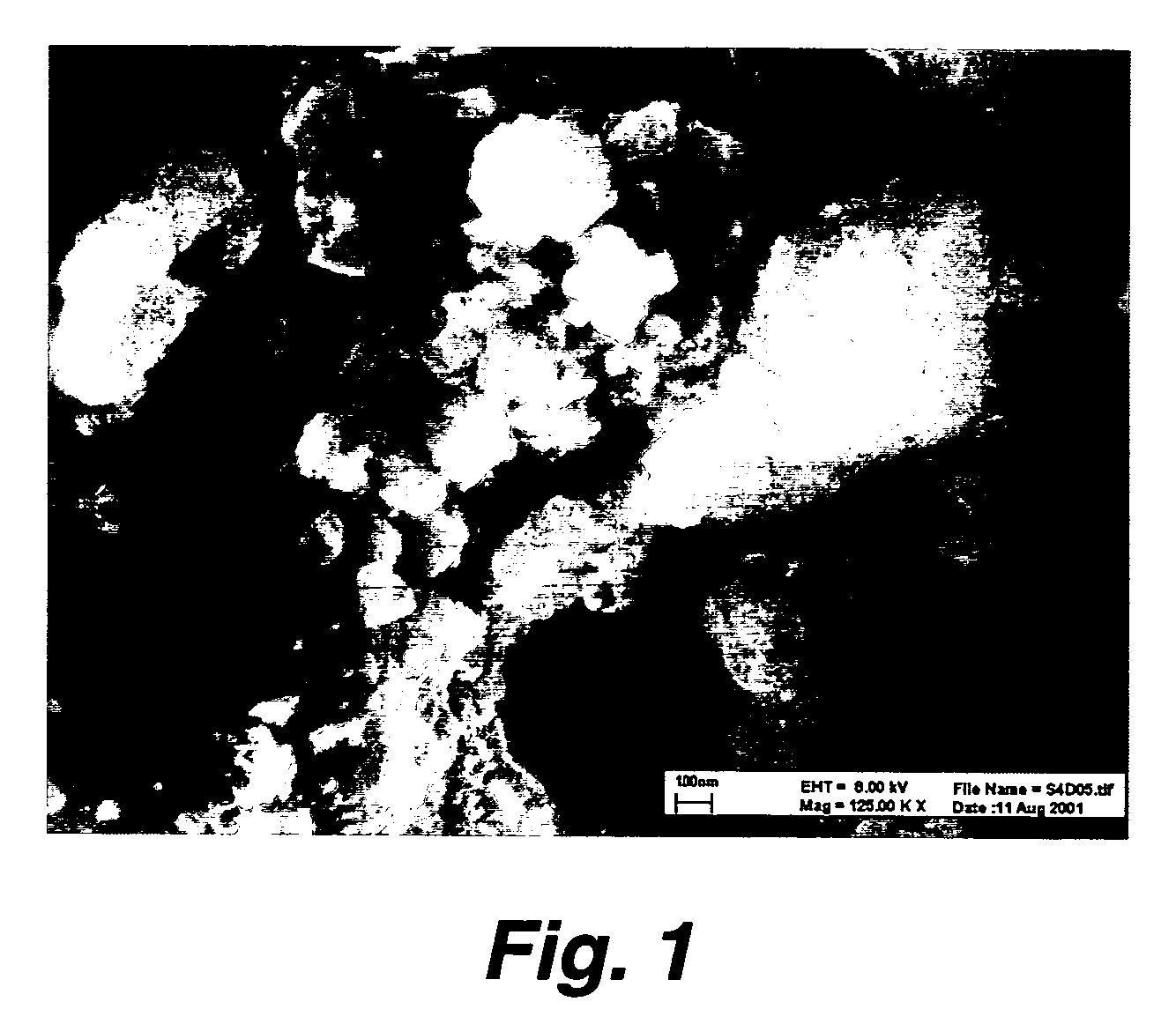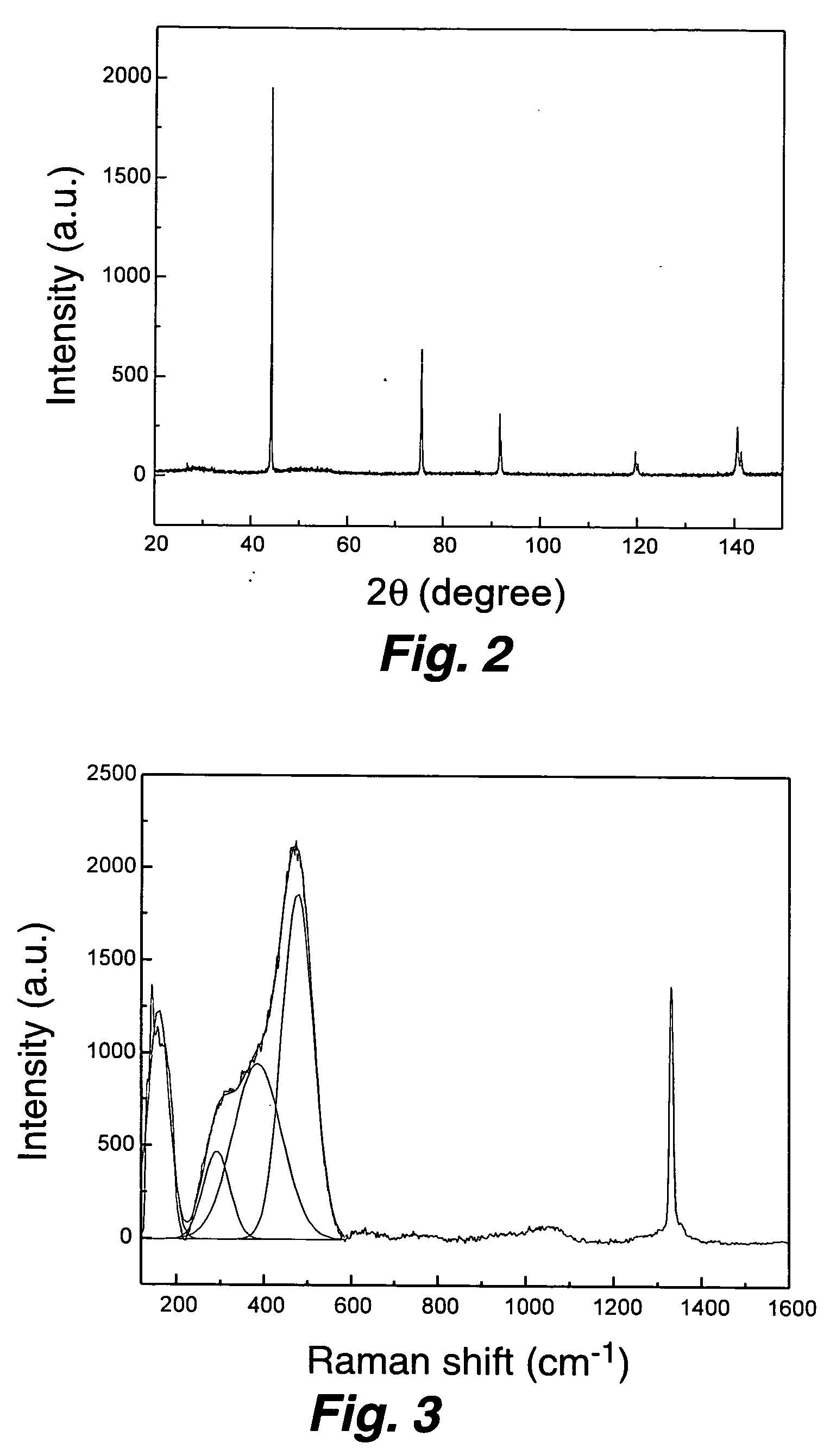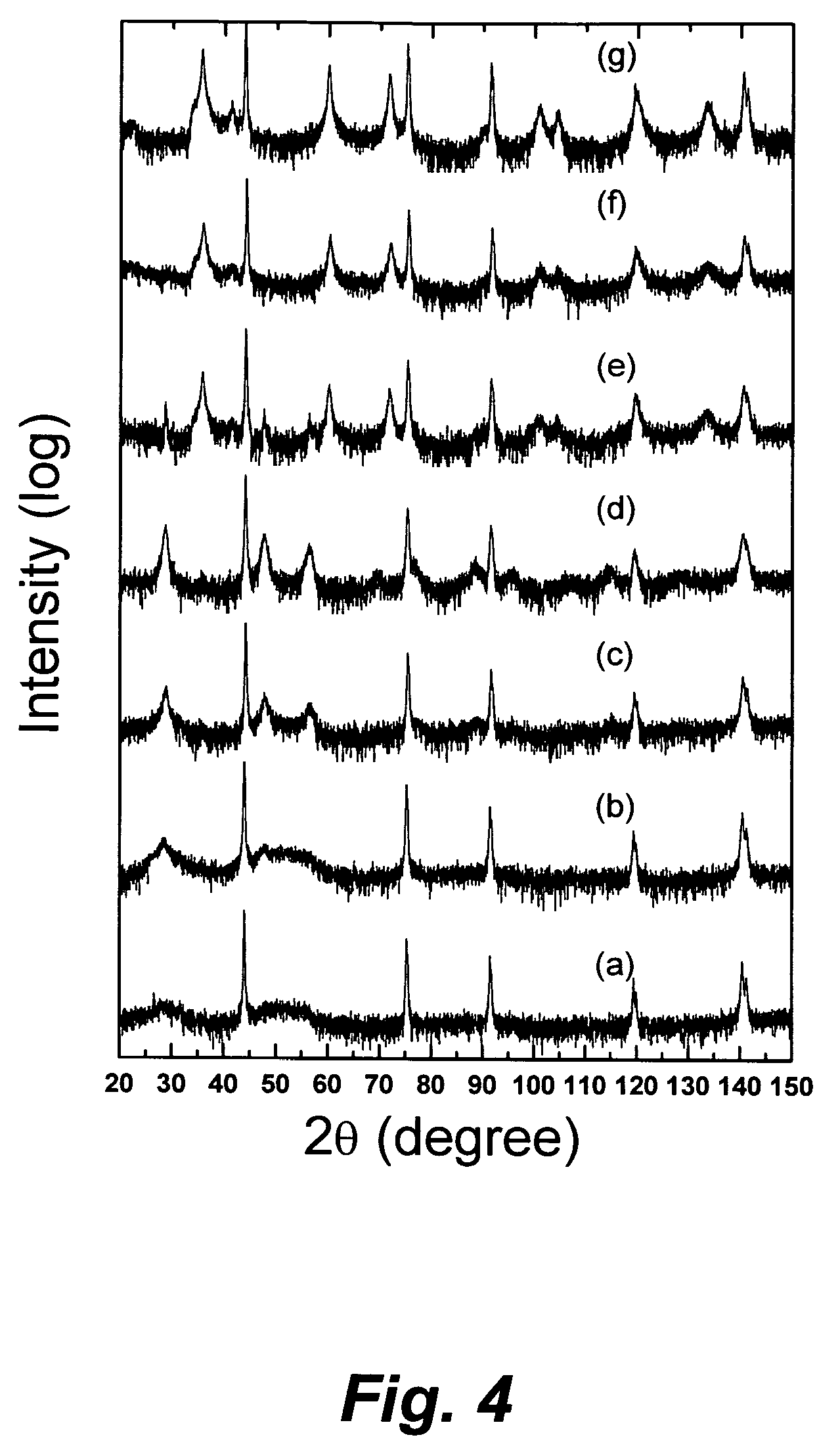Diamond-silicon carbide composite and method
a silicon carbide and composite technology, applied in the direction of mechanical working/deformation, etc., can solve the problems of high fracture toughness of composite materials, limited potential applications, and uneven density of composite materials
- Summary
- Abstract
- Description
- Claims
- Application Information
AI Technical Summary
Problems solved by technology
Method used
Image
Examples
example a
[0038] About 5 grams of synthetic diamond powder having a grain size of about 5-10 micrometers (μm) (General Electric Co., Worthington, Ohio) and about 1.25 grams of silicon powder having a grain size of about 1-20 μm (Alfa Aesar, Ward Hill, Mass.) were mixed together and placed into a tungsten carbide vial with tungsten carbide balls. The vial was placed in a CERTIPREP SPEX 8000-D mixer mill (Metuchen, N.J.) inside a sealed glove box that was purged with argon. The powder mixture was ball milled for about 11 hours. The ball-milled powder was removed and the diamond-to-silicon weight ratio of the ball-milled powder was determined to be 84:16 by energy disperse x-ray analysis. The powder was further characterized by scanning electron microscopy, x-ray diffraction and Raman spectroscopy.
[0039]FIG. 1 shows a scanning electron micrograph (SEM) of the ball-milled powder. FIG. 1 shows that the ball-milled powder particles have round shapes and are stuck together.
[0040]FIG. 2 shows an x-...
example b
[0044] Ball-milled powder, prepared according to the procedure of EXAMPLE A, was placed into the sintering apparatus. The powder was first subjected to a pressure of 5 GPa (±0.5 GPa) at room temperature within 10 minutes, after which the temperature was increased to 873K within a 3 minute period. The temperature was maintained at 873K (±50K) for 30 seconds, after which the temperature was lowered to room temperature within a 5 minute period. The resulting composite was in the form of a tablet with a diameter of 6 millimeters and a height of about 2 millimeters, and had a Vickers hardness of 12 GPa, a Knoop hardness of 10 GPa, a Young's modulus of 153 GPa, and a fracture toughness of 3 MPa·m1 / 2. The surfaces were ground using a diamond metal bonded wheel and then polished using 0.5 micron diamond spray and 0.1 micron diamond paper. The x-ray diffraction pattern and Raman spectrum of the composite are shown in FIG. 4b and FIG. 5b, respectively.
example c
[0045] Ball-milled powder, prepared according to the procedure of EXAMPLE A, was placed into the sintering apparatus. The powder was first subjected to a pressure of 5 GPa (±0.5 GPa) at room temperature within 10 minutes, after which the temperature was increased to 1273K within a 3 minute period. The temperature was maintained at 1273K (±50K) for 30 seconds, after which the temperature was lowered to room temperature within a 5 minute period. The resulting composite was in the form of a tablet with a diameter of 6 millimeters and a height of about 2 millimeters, and had a Vickers hardness of 14 GPa, a Knoop hardness of 12 GPa, a Young's modulus of 167 GPa, and a fracture toughness of 3 MPa·m / 2. The surfaces were ground using a diamond metal bonded wheel and then polished using 0.5 micron diamond spray and 0.1 micron diamond paper. The x-ray diffraction pattern and Raman spectrum of the composite are shown in FIG. 4c and FIG. 5c, respectively.
PUM
| Property | Measurement | Unit |
|---|---|---|
| pressure | aaaaa | aaaaa |
| pressure | aaaaa | aaaaa |
| pressure | aaaaa | aaaaa |
Abstract
Description
Claims
Application Information
 Login to View More
Login to View More - R&D
- Intellectual Property
- Life Sciences
- Materials
- Tech Scout
- Unparalleled Data Quality
- Higher Quality Content
- 60% Fewer Hallucinations
Browse by: Latest US Patents, China's latest patents, Technical Efficacy Thesaurus, Application Domain, Technology Topic, Popular Technical Reports.
© 2025 PatSnap. All rights reserved.Legal|Privacy policy|Modern Slavery Act Transparency Statement|Sitemap|About US| Contact US: help@patsnap.com



